St. Augustine, FL
The Fort | Castillo de San Marcos
Oldest masonry fort in the continental U.S.Originally constructed by the Spanish between 1672 - 1695, served primarily as an outpost of the Spanish Empire, and protecting the sea route for treasure ships returning to Spain. Although the Castillo has served a number of nations throughout its history, it has never been taken by military force. During the 18th century, the Castillo went from Spanish control to British and back to the Spanish, all by treaty.
The Spanish remained in power in Florida until the area was purchased by the United States in 1821. Called Fort Marion at this time, the Castillo was used by the US army until 1899. The Castillo was made a National Monument in 1924 and became part of the National Park system in 1933. In 1942, Congress restored the original name. The park consists of the original historic Castillo fortress itself with its attendant grounds, some 25 total acres.
The Fort is built using a local stone called "coquina" (Co-KEY-Na). The name means "little shells" and that is exactly what the stone is made of -- little shellfish that died long ago, and their shells have now become bonded together to form a type of limestone. The coquina rock was quarried from Anastasia Island across the bay from the Castillo. The British cannon had little effect upon the soft coquina walls which merely absorbed the shock of the hits with little damage.
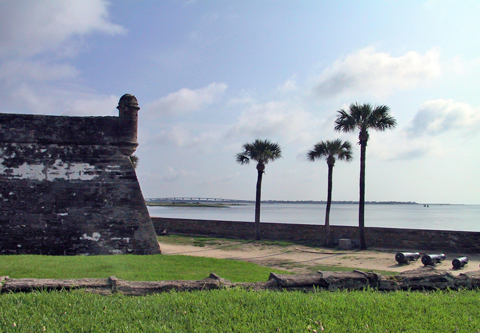
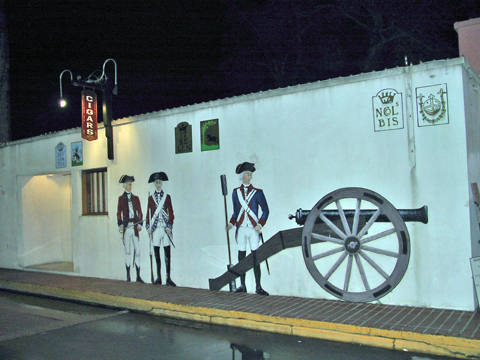
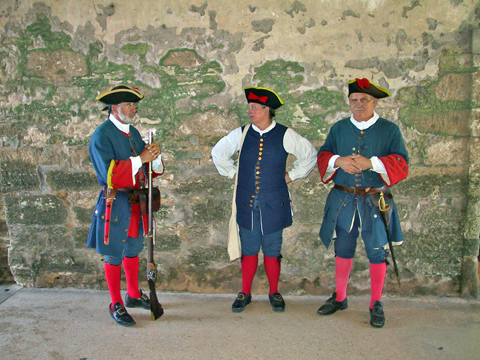
These dudes and dudettes go back in time.
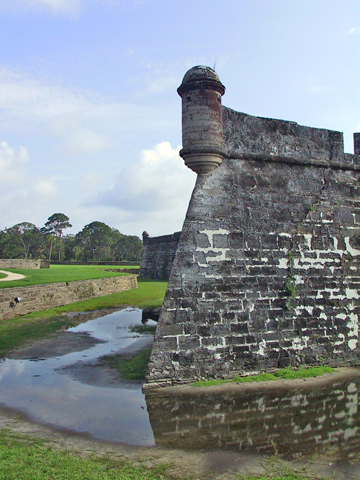
Favorite photo.
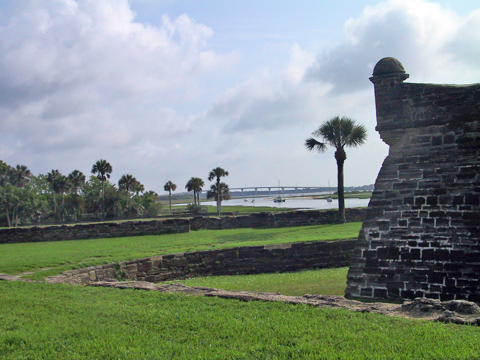
The south facing view from the back.
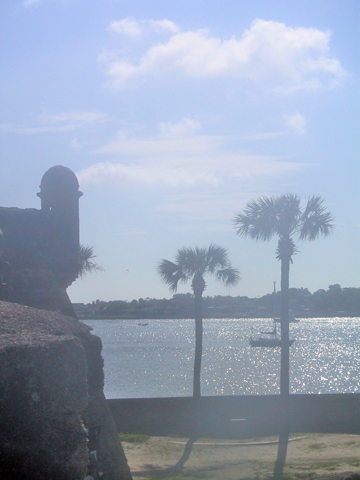
The sun makes a wonderful soft lens effect.
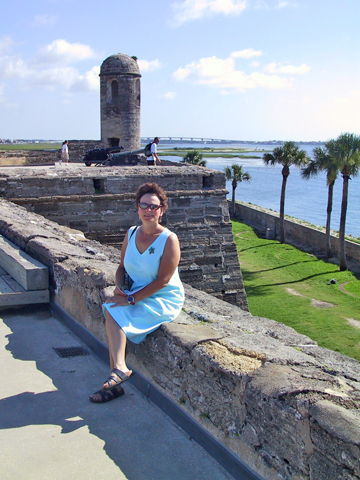
Gina.
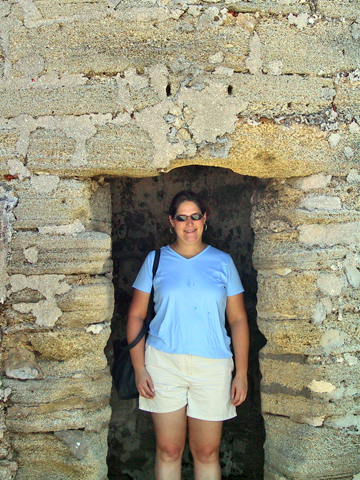
Dorky photo inside one of the 4 lookout posts.
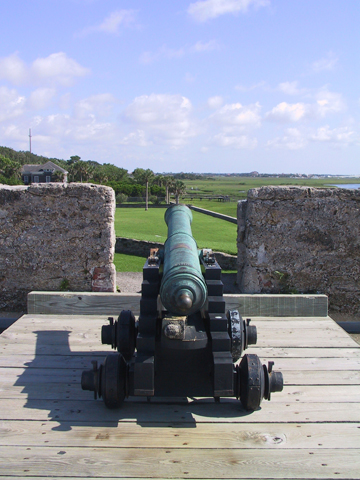
From the back.
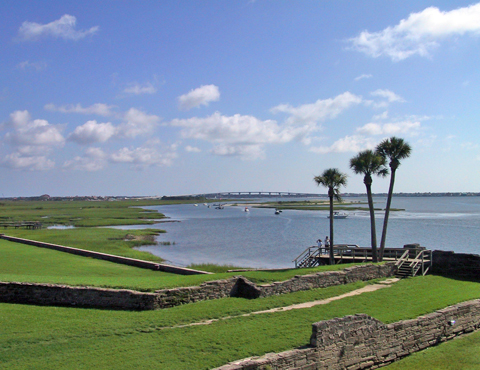
Looking out from the top.
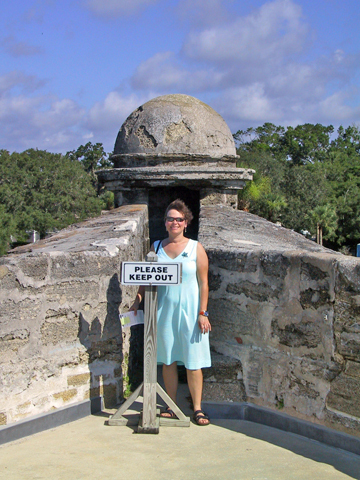
Gina demonstrates her dorky version. I like her version better.
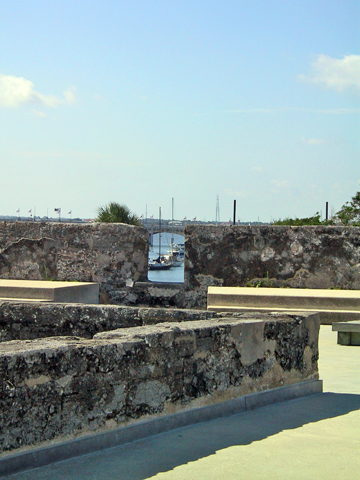
Good composition.
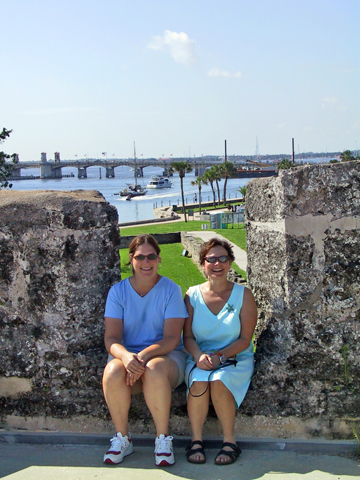
Cute photo, all together now.
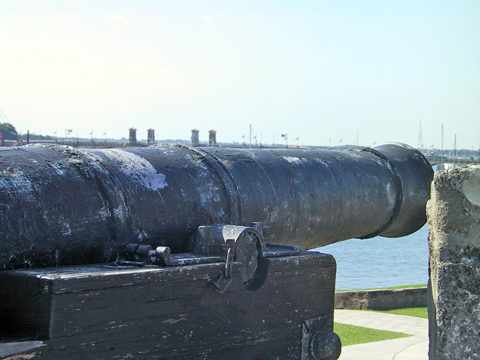
A cannon with the view of the Bridge of Lions peaking over.
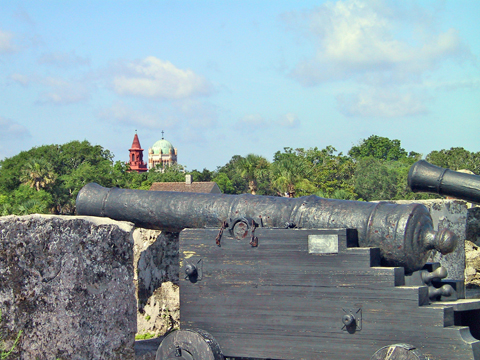
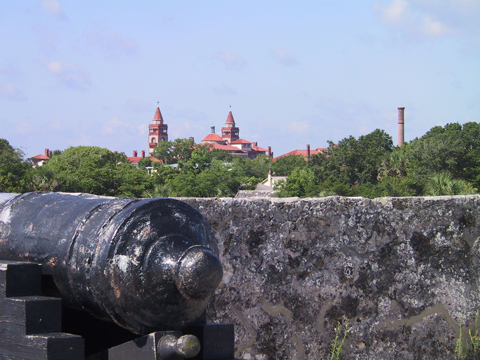
I believe that is Flagler College, in the distance.